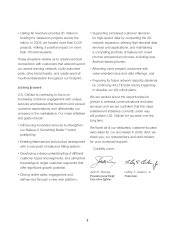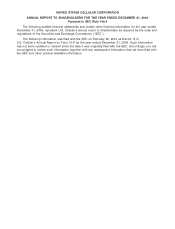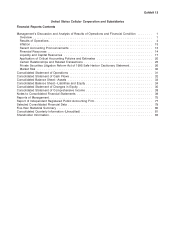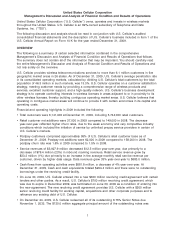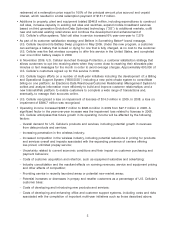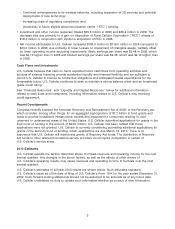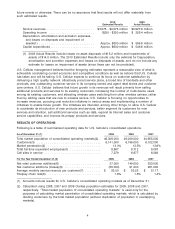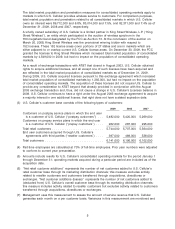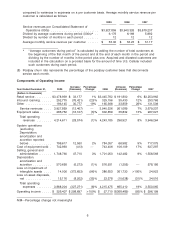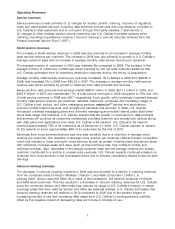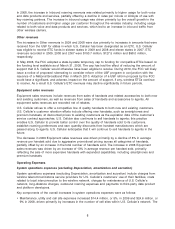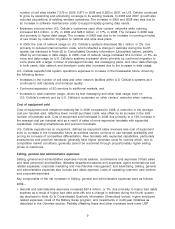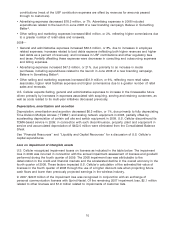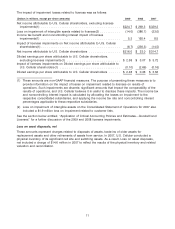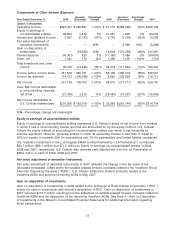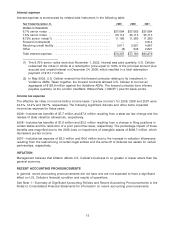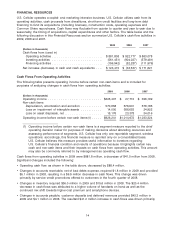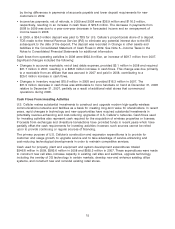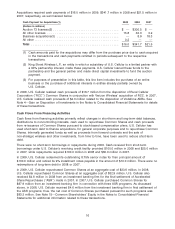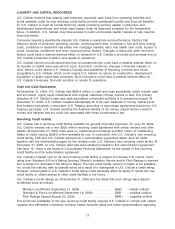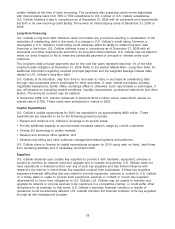US Cellular 2009 Annual Report Download - page 16
Download and view the complete annual report
Please find page 16 of the 2009 US Cellular annual report below. You can navigate through the pages in the report by either clicking on the pages listed below, or by using the keyword search tool below to find specific information within the annual report.In 2008, the increase in Inbound roaming revenues was related primarily to higher usage for both voice
and data products and services, partially offset by a decline in rates per minute or kilobyte of use with
key roaming partners. The increase in inbound usage was driven primarily by the overall growth in the
number of customers and higher usage per customer throughout the wireless industry, including usage
related to both voice and data products and services, which led to an increase in inbound traffic from
other wireless carriers.
Other revenues
The increases in Other revenues in 2009 and 2008 were due primarily to increases in amounts that were
received from the USF for states in which U.S. Cellular has been designated as an ETC. U.S. Cellular
was eligible to receive ETC funds in sixteen states in 2009 and 2008 and eleven states in 2007. ETC
revenues recorded in 2009, 2008 and 2007 were $150.7 million, $127.5 million and $98.0 million,
respectively.
In May 2008, the FCC adopted a state-by-state temporary cap to funding for competitive ETCs based on
the funding level available as of March 31, 2008. The cap has had the effect of reducing the amount of
support that U.S. Cellular would otherwise have been eligible to receive. During 2010, the FCC will likely
issue a notice of proposed rulemaking to consider reform of the USF program in conjunction with the
issuance of a National Broadband Plan in March 2010. Adoption of a USF reform proposal by the FCC
could have a significant, and adverse, impact on the amount of support, if any, wireless ETCs continue
to receive. As a result U.S. Cellular’s ETC revenues may decline significantly in future periods.
Equipment sales revenues
Equipment sales revenues include revenues from sales of handsets and related accessories to both new
and existing customers, as well as revenues from sales of handsets and accessories to agents. All
equipment sales revenues are recorded net of rebates.
U.S. Cellular strives to offer a competitive line of quality handsets to both new and existing customers.
U.S. Cellular’s customer retention efforts include offering new handsets, such as smartphones and
premium handsets, at discounted prices to existing customers as the expiration date of the customer’s
service contract approaches. U.S. Cellular also continues to sell handsets to agents; this practice
enables U.S. Cellular to provide better control over the quality of handsets sold to its customers,
establish roaming preferences and earn quantity discounts from handset manufacturers which are
passed along to agents. U.S. Cellular anticipates that it will continue to sell handsets to agents in the
future.
The decrease in 2009 Equipment sales revenues was driven primarily by a decline of 8% in average
revenue per handset sold due to aggressive promotional pricing across all categories of handsets,
partially offset by an increase in the total number of handsets sold. The increase in 2008 Equipment
sales revenues was driven by an increase of 10% in average revenue per handset sold, primarily
reflecting the sale of more expensive handsets with expanded capabilities, including smartphones and
premium handsets.
Operating Expenses
System operations expenses (excluding Depreciation, amortization and accretion)
System operations expenses (excluding Depreciation, amortization and accretion) include charges from
wireline telecommunications service providers for U.S. Cellular’s customers’ use of their facilities, costs
related to local interconnection to the wireline network, charges for maintenance of U.S. Cellular’s
network, long-distance charges, outbound roaming expenses and payments to third-party data product
and platform developers.
Key components of the overall increases in system operations expenses were as follows:
• Maintenance, utility and cell site expenses increased $14.4 million, or 5%, in 2009 and $24.6 million, or
9% in 2008, driven primarily by increases in the number of cell sites within U.S. Cellular’s network. The
8


